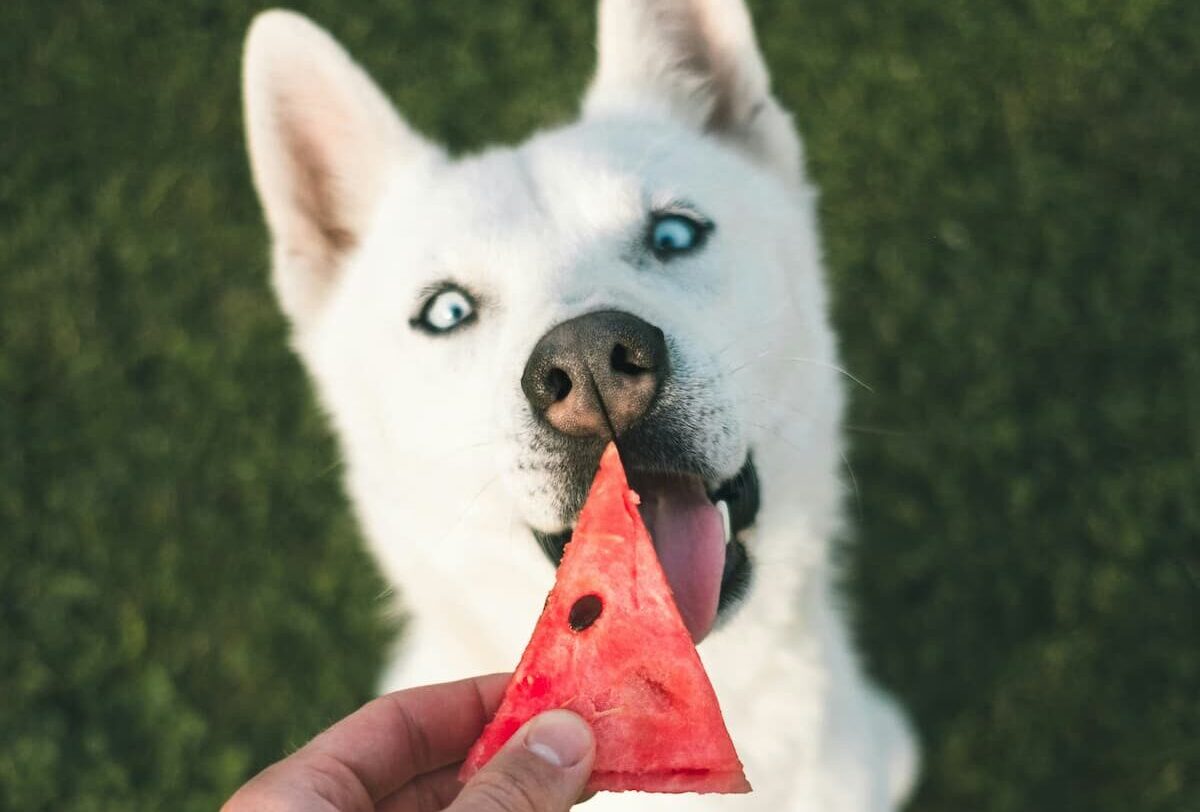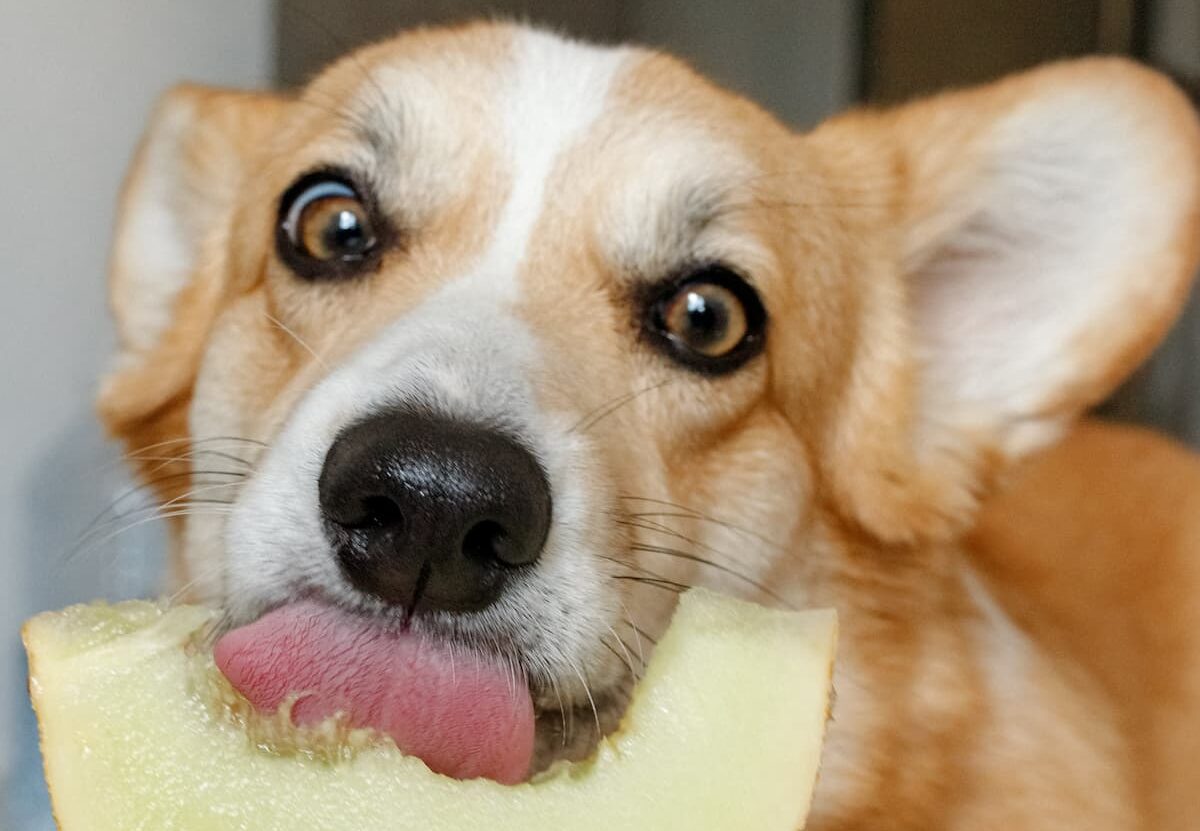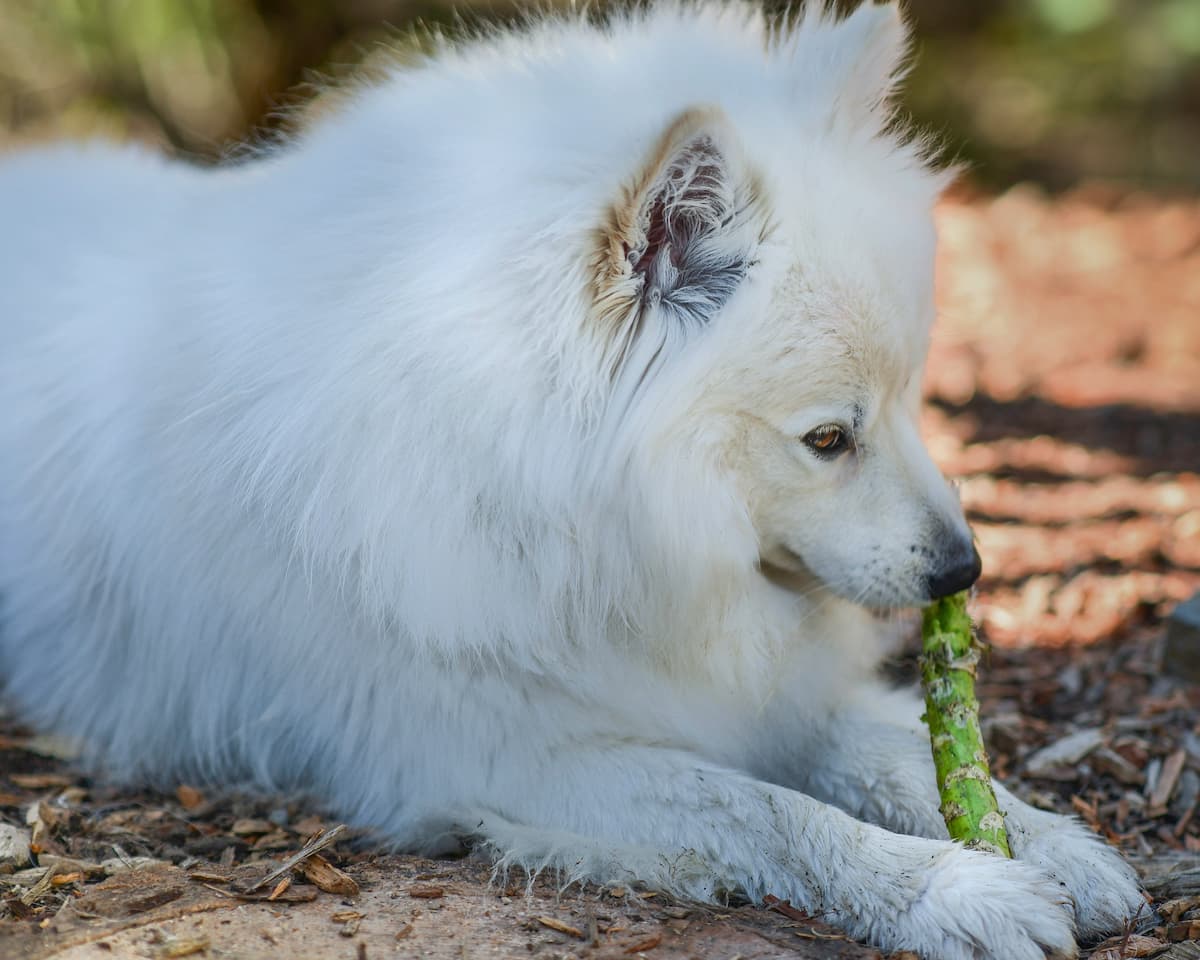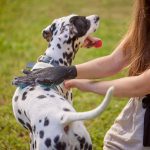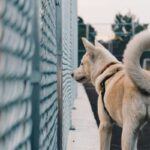Imagine this: you come home after a long day at work, craving a moment of relaxation.
As you step through the front door, ready to kick off your shoes and sink into the welcoming embrace of your couch, you are abruptly greeted by an invasion of chaos.
Your beloved canine companion, with an insatiable appetite for destruction, has transformed your once tidy living room into a post-apocalyptic wasteland.
Couch cushions?
Shredded.
Remnants of a beloved pair of slippers?
Indistinguishable.
It’s as if your furry friend has devoured the entire contents of the house.
But why, oh why, do dogs eat everything in sight?
Read on the find the answers to your question.
Why Dogs Have an Insatiable Appetite for Anything They Find?
Picture this: you’re out for a leisurely stroll with your furry friend when suddenly, they become fixated on something unappetizing lying on the ground.
It could be a discarded sandwich, a fallen apple, or even a leftover piece of pizza.
Without warning, your beloved canine devours it with unwavering enthusiasm.
But why do dogs have such an insatiable appetite for anything they find?
It turns out, there are several reasons behind this peculiar behavior.
One possible reason dogs eat everything in sight is because of their highly developed sense of smell.
Dogs have an incredible ability to detect scents, far beyond what our own noses can detect.
So when they come across something that catches their attention, their natural instinct is to investigate further, often by tasting it.
This is why you may see your dog sniffing and licking objects before deciding whether or not to devour them.
Another reason dogs eat everything could be related to their evolutionary history as scavengers.
Before becoming our beloved companions, dogs were scavengers that relied on finding food sources wherever they could.
This behavior has been passed down through generations, making them more likely to eat anything they come across.
It’s like a remnant of their past survival instincts, even if they now have a bowl of kibble waiting at home.
Searching for Nutrients in Unexpected Places
Another reason for why dogs eat everything in sight may lie in their unmet nutritional needs and their instinctual drive to seek out nutrients in unexpected places.
Like humans, dogs require a balanced diet to thrive and maintain optimal health.
When their nutritional needs aren’t being met, they may resort to seeking out alternative sources of nutrients.
This behavior is rooted in their ancestral instincts as scavengers, constantly searching for food in order to survive.
While your pup may have access to a well-balanced commercial dog food brand, their innate drive to seek out variety and different forms of sustenance can lead them to consume non-food items.
Furthermore, if your dogs’ diet is lacking in essential vitamins, minerals, or other vital components, they may instinctively seek out these nutrients in unexpected places.
This can manifest as grazing on grass, munching on dirt, or even devouring strange objects like rocks or plastic.
Dogs are incredibly intuitive when it comes to their own nutritional needs, and they may engage in these behaviors as a means of self-regulating their diet.
The Impact of Boredom and Lack of Mental Stimulation on Canine Eating Habits
Dogs chewing on or eating random items can also be a result of boredom derived from a lack of mental stimulation.
When dogs become bored, they often resort to destructive chewing as a way to alleviate their frustration.
Imagine spending all day cooped up inside with nothing to do – it wouldn’t take long before you start searching for something to occupy your mind.
The same goes for our canine companions.
Chewing provides mental stimulation and can help alleviate stress or anxiety.
Without sufficient mental stimulation and exercise, dogs may turn to chewing as a way to entertain themselves and relieve their boredom.
Moreover, chewing can be a natural instinct for dogs.
It helps them explore the world around them and provides a sense of gratification.
Just like humans, dogs have an inherent need for mental and physical exercise.
When they don’t receive adequate stimulation, they may resort to chewing on objects to satisfy those instincts.
This can be particularly true for high-energy breeds who require regular exercise and mental challenges to keep them content.
The Link between Emotional Distress and Excessive Chewing
Of course, mischief, boredom or hunger aren’t the only reasons why dogs eat everything in sight – sometimes their excessive chewing or strange eating habits may be caused by separation anxiety and stress.
Separation anxiety is a common canine condition that occurs when dogs become overwhelmed by the absence of their owners.
This emotional distress triggers a range of behaviors, one of the most prominent being excessive chewing.
When dogs experience separation anxiety, they may chew on objects as a means of coping with their anxiety.
The act of chewing releases endorphins, providing a temporary sense of comfort and relief from the stress they are feeling.
Stress can also contribute to a dog’s penchant for destruction.
Just like humans, dogs can experience stress from a variety of factors such as changes in their environment, loud noises, or even previous traumatic experiences.
When stress levels rise, dogs may resort to excessive chewing as a way to alleviate their tension.
The act of chewing helps to release pent-up energy and can provide a soothing effect on their frazzled nerves.
In this way, chewing becomes a form of stress relief for our beloved canines, albeit a destructive one.
How to Curb Your Dog’s Incessant Chewing Habits and Promote a Healthier Lifestyle
Here are reasons behind your dog’s strange diets and incessant chewing habits and what you can do to curb these habits and promote a healthier lifestyle:
1. Teething Troubles: Just like human babies, puppies go through a teething phase too.
Chewing helps alleviate the discomfort caused by their incoming adult teeth.
Provide your furry friend with appropriate chew toys made specifically for teething puppies.
These toys are designed to soothe their gums and can distract them from munching on your favorite pair of shoes.
2. Boredom Buster: Dogs are curious creatures and if they don’t have enough mental and physical stimulation, they might resort to chewing as a form of entertainment.
Make sure your dog gets enough exercise and playtime to tire out their active minds and bodies.
Introduce interactive toys that require problem-solving skills or consider enrolling them in doggy daycare for some social interaction.
3. Separation Anxiety: Dogs can develop separation anxiety when left alone for long periods, causing them to chew as a coping mechanism.
Gradually acclimatize your dog to being alone by starting with short periods of separation and gradually increasing the duration.
Provide them with puzzle toys or treat-filled chew toys to keep them occupied and ease their anxiety.
Remember, each dog is unique, so finding the right solution may require some trial and error.
By understanding the reasons behind your dog’s chewing habits and implementing strategies to redirect their behavior, you can help them lead a happier and healthier life.
So next time your furry friend starts gnawing on your favorite slippers, don’t fret, just remember these tips and tackle the chew!
FAQ
Q: So, why do dogs have an insatiable appetite for almost everything?
A: Well, let’s dive into the world of our canine companions.
First things first, dogs are descendants of wild wolves, and their ancestors were accustomed to scavenging for food in order to survive.
This scavenging instinct is deeply ingrained in their DNA, which means they still retain that natural inclination to find and devour anything that resembles a meal.
Q: But why would they eat something that’s not even remotely edible?
A: Ah, great question!
Dogs rely heavily on their sense of smell to explore their surroundings and identify objects.
And guess what?
Our scent-detecting superheroes have about 300 million olfactory receptors in their noses, while us humans only have a measly 6 million!
This hyper-sensitive sense of smell allows them to pick up even the faintest of scents, making everything in their path a potential snack.
Plus, dogs use their mouths as a way to further examine the objects they come across, which often leads to some accidental nibbling.
Q: Is this eating behavior specific to certain dog breeds?
A: Nope, this behavior isn’t limited to any specific breed.
Dogs of all shapes and sizes have been known to gobble up random items, be it food or non-food.
From the little Chihuahuas to the mighty Great Danes, this habit can be found across the canine spectrum.
Although, it’s important to note that some breeds might exhibit a stronger penchant for eating due to their individual personalities or their tendency to explore and investigate more actively.
Q: Is it dangerous for dogs to eat random things?
A: Absolutely!
While some items your dog decides to snack on may be harmless, there’s always a risk associated with ingesting non-food objects.
Consuming random items can potentially lead to intestinal blockages, choking hazards, or even poisoning if the object is toxic.
That’s why it’s crucial to keep a watchful eye on your furry friend to prevent any unwanted culinary adventures.
Q: How can I stop my dog from eating everything they find?
A: Ah, the million-dollar question!
Though it may be challenging to completely eradicate this behavior, there are a few steps you can take to help manage your dog’s munching tendencies.
Firstly, ensure they are getting a balanced diet with all the necessary nutrients.
Sometimes, dogs may be inclined to eat non-food items out of nutritional deficiencies.
Secondly, keep their living environment tidy and free from potential hazards, such as small objects that could be swallowed.
And lastly, consistent training and reinforcement will go a long way in teaching your pup what’s appropriate to chomp on and what’s off-limits.
Q: Are there any medical reasons behind this behavior?
A: Sometimes, dogs may feel compelled to eat non-food objects due to medical conditions such as pica, which is characterized by the ingestion of non-nutritive items.
If you notice excessive or abnormal eating behavior, it’s essential to consult with your veterinarian.
They can help determine whether there’s an underlying medical issue that needs to be addressed.
Q: Any final thoughts or advice for fellow dog owners to deal with their dogs who likes to eat everything in sight?
A: Absolutely!
As pet owners, it’s our responsibility to ensure the safety and well-being of our beloved dogs.
Understanding their natural instincts and behavior can help us better manage their urges to gobble up everything in sight.
So, watch out for potential hazards, provide proper nutrition, and seek professional help if needed.
Remember, with a little patience and guidance, you can keep your furry friend happily munching on appropriate treats while maintaining their health and happiness!
Wrapping Up
From socks to sticks, shoes to shreds, dogs seem to have an uncanny ability to devour just about anything.
But far from trying to be gross, there are actually a few reasons behind this peculiar doggy behavior.
Firstly, let’s remember that dogs are descendants of wild wolves.
In the wild, scavenging for food was a daily struggle, and being picky eaters simply wasn’t an option.
So, even though our beloved pets now have their meals conveniently prepared and served to them, that primal instinct remains lingering within them.
It’s as if they’re constantly thinking, “Who knows when I’ll find my next meal? Better grab whatever comes my way!”
Secondly, dogs are curious creatures.
They see the world through their noses and mouths, and exploring their surroundings often involves a sample taste.
Everything feels like a potential discovery, and they rely on their taste buds to gather information about the environment.
It might not make sense to us humans, but for dogs, it’s just their way of experiencing the world around them.
Furthermore, certain dog breeds are more prone to chewing and eating whatever they find.
Take Labrador Retrievers, for example.
These lovable goofballs were bred to retrieve and carry things in their mouths, and that includes not only toys but peculiar items like remote controls or table legs.
It’s like they have a built-in need to carry the world in their jaws!
Lastly, let’s not forget about boredom.
Dogs that lack proper mental and physical stimulation may resort to destructive behaviors like eating everything in sight simply to entertain themselves.
Picture this: you leave your furry friend at home for the day without any toys or activities to keep them busy.
They’re left with nothing but their own devices, and soon enough, the couch cushions become their equivalent of Netflix entertainment.
So, next time you catch your furry friend munching on something peculiar, take a moment to consider the inner workings of their adorable but mischievous minds.
Dogs’ penchant for eating everything in sight may not always make sense to us, but it’s part of their unique charm.
And after all, who can resist those innocent puppy eyes, even when they’ve turned your favorite pair of shoes into a chew toy.


